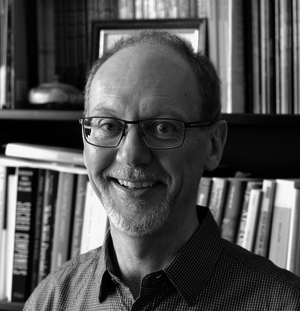Here are the thought bubbles I imagine hovering over the heads of thousands of young men and women at dorms, house parties and bars at universities and colleges as they head back to school this fall:
“Whoa, she’s hot!” [Translation: “I want to have sex with her/him!”]
Many of these interactions might end with a hookup: mutually agreed upon, no-strings-attached sex. Unfortunately, some of these encounters lead to a second stage, which might go something like this:
“Okay, good! She’s not saying no!” [Translation: “I don’t know if s/he wants to, but so what!”]
This, we’re given to understand, has become the ordinary way that young adults enrolled in our esteemed institutions of higher education routinely behave. According to recent polls, up to 80 per cent of university students report that they’ve “hooked up.” As a society, we tolerate – even condone – the first stage as inevitable and mostly harmless. But when a small proportion of these encounters advance to the second stage, we recognize that something is not quite right. We’ve come to call that sexual assault, or sexual violence, and ruled it out of bounds.
Since the first stage is widely endorsed and celebrated, we can come up with no better solution for the second stage other than “consent.” Consent rests on the dubious but by now widely accepted assumption that sex is no different than sharing a cup of tea (as a recent viral YouTube video puts it): a harmless and (mostly) fun interaction between two (or more) adults that has only minimal consequences for the participants, and certainly no connection beyond them.
Armed with the advanced techniques of consent, we imagine that we have sanitized and tamed sex so that it can be fun and safe for all. Of course, those who have actually muddled about in the delights and, yes, disappointments of married sexual intimacy realize that even at its best, sex cannot be made risk-free. When Wendell Berry observes that “we presume to teach our young people that sex can be ‘safe.’ What a lie! Sex was never safe…,” it’s because he knows that sex has never been just about two individuals. Instead, he says, sexual love is risky because of its power to bind not just two lovers but much more:
“The sexuality of community life, whatever its inevitable vagaries, is centred on marriage, which joins two living souls as closely as, in this world, they can be joined. This joining of two who know, love and trust one another brings them in the same breath into the freedom of sexual consent and into the fullest earthly realization of the image of God. From their joining, other living souls come into being, and with them great responsibilities that are unending, fearful and joyful. The marriage of two lovers joins them to [each other], to forebears, to descendants, to the community, to Heaven and earth. It is the fundamental connection without which nothing holds, and trust is its necessity.”
By contrast, the culture of risk-free sex by consent rests upon very different assumptions about what it means to be human and what it means to be free. As Charles Taylor has argued, the late modern era introduced “…a new conception of one’s sexuality as an essential part of one’s identity.” The highest good in what Taylor calls our age of authenticity is to discover one’s own identity and to be free to express that identity without any external constraints (other than allowing others to do so as well).
Christian Smith, in his recent deconstruction of the discipline of sociology, put it this way: “A good life and society throws off the restrictive, repressive constraints placed on the gratification of individual pleasures and frees everyone to satisfy any pleasure that she or he so desires – provided, again, that doing so does not interfere with anyone else being able to do the same (which is ensured by informal contractual engagements by countless exchanges of informed consent among adults).” While Smith’s analysis specifically focuses on what he calls “the sacred project of American sociology,” his observations reflect a broader consensus in North American higher education, in not just its formal curriculum but also its lifestyles and practices (or what James K.A. Smith has described as liturgies).
In her book Adam and Eve After the Pill, Mary Eberstadt starkly describes the hazards of accepting such assumptions and forging ahead into the brave new world of so-called sexual freedom. As she persuasively documents, the sexual revolution has left a wake of social damage, often targeting the very groups that it was supposed to liberate: women, especially, and along with them, children.
If sex were tame and safe, perhaps consent would work. But because sex is volatile and beautiful, it needs parameters. A pastor I know put it this way: sex is like the fire crackling cheerily in your living room hearth, creating warmth and comfort for the household. If you try and build a cozy fire on the floor of every room in your house, warmth and comfort turn quickly to destruction. Sex, like fire, only works within boundaries. And since these boundaries come not from humans but from God, they are non-negotiable. That is, when humans properly grasp the natural order built into relationships of sexual intimacy, then human flourishing is made possible; when we don’t, trouble arises sooner or later.
Centuries-old rituals for sex produced the patient practices of courtship, engagement and marriage. Communal standards for sexual impropriety were clear and were enforced. True, they were sometimes harsh and punitive and judgmental. But that’s because it was collectively understood that the consequences of a fire outside the hearth were even more destructive.
Consent is like trying to teach the fire outside the hearth not to be so hot. But, once it’s outside the fireplace, it’s too late. Is it any surprise, then, that the rituals of consent look somewhat ridiculous? Witness the latest video tutorials by current sexpert Laci Green (www.lacigreen.tv), whose sex and advice videos have transformed her into a YouTube sensation and sex-ed industry darling.
“Oh, hi, babes!” she squeals in a sexy greeting to her viewers/voyeurs, who she then goes on to instruct in the finer points of seeking consent in sexual relationships, to wit:
“Are you enjoying yourself ?”
“How does that feel?”
“Do you like that?”
“Do you want me to keep going?”
“How far do you want me to go?”
If this seems too awkward or complicated, don’t worry. As another recent consent campaign (projectconsent. com) says, “Consent is simple.” It’s helpfully reduced to animated genitalia detached from their bodies (and looking creepily like VeggieTales’ Bob and Larry) bouncing up and down demonstrating, in 20-second video clips, exactly how consent is supposed to work.
Just master these easy verbal techniques of consent (and non-verbal ones as well, which you can observe in Ms. Green’s video), and you, too, can engage happily ever after in unlimited sex with anyone you want, as long as they want it, too. Equipped with these foolproof methods of consent, we can carry on with the sexual freedom project in higher education in which we instruct today’s youth in the liberating pleasures of free market hook-up culture where everyone gets to be themselves and no one gets hurt.
Green holds out this seductive promise: “We can create a consent culture where all the sex that is had is the sex that is wanted.” That viral “sex is like tea” video puts it even more plainly: “consent is everything.” But can we? And is it? Even if we succeed in teaching young men and women about consent, is that really everything, and will that result in “all the sex that is had is the sex that is wanted”?
Not according to the available evidence. Bubbling below the surface of hook-up campus culture is a current of deep dissatisfaction, hurt and misery. Donna Freitas heard hints of that from students in her religious studies course on gender and relationships (which her colleagues disparagingly referred to as that course where they “gossip about boys”).
Wanting to know more, she interviewed hundreds of students at private, secular, Catholic and evangelical colleges and universities. She found that students yearned for meaningful, intimate relationships (this is consistent with research that shows that more than 70 per cent of millennials aspire to be married) but had no idea how to find them. These students had no source of reliable guidance about how to navigate the open waters of sexual freedom other than “be yourself and follow your heart/gut/instinct/feelings.”
Can we really expect that the decontextualized and stilted mechanics of consent can smooth out the awkwardness of those first-time sexual encounters? Is it any wonder that there is a high probability of miscommunication and misunderstanding?
That’s what those painstaking rituals of courtship, engagement and marriage accomplish: They build a foundation of trust and mutual respect within a community of accountability and support upon which newlywed couples haltingly explore together the mysteries and wonder and joy of sex in a context of trust, commitment and fidelity – or what we used to call “troth.”
The key questions for sexual consent aren’t “Does that feel good?” or “Can I touch you there?” or “Do you like it when I rub you like this?” They are “Will you hold my hand when I’m delivering our baby?” or “Will you go change her diaper this time?” or “Will you be with me from this day forward, for better for worse, for richer for poorer, in sickness and in health, to love and to cherish, till death us do part?” or, as the Fab Four famously crooned, “Will you still need me, will you still feed me, when I’m 64?”
The long-standing cultural practices of sex within boundaries arise out of a simple confession that is regarded today as hopelessly antiquated, ridiculous, even oppressive: I don’t own my body and I’m not free to do with it whatever I wish. Actually, the way it’s put in the 16th century Q&A curriculum (a.k.a. the Heidelberg Catechism) is that “I am not my own, but belong with body and soul, both in life and in death, to my faithful Saviour Jesus Christ.”
Is it possible to imagine that there is any place where such outdated ideas could actually be practised? Well, yes, there is. But social science scholars who have been studying campus sexual violence for decades do not even seem to know to ask such questions or where to look.
When Mary Koss and her colleagues developed a revolutionary new tool for measuring unwanted sexual experiences (the Sexual Experiences Survey) – which has now been used for decades, with thousands of students in hundreds of colleges and universities – they were able to provide much more accurate (and, as it turns out, sobering) estimates of the incidence and prevalence of sexual assault and rape on campuses across North America. Buried in their findings was an astonishing item: the incidence of rapes on religious campuses was only half that at secular institutions. Alas, they provided no further details about this intriguing result.
One might think that such a result would have spurred researchers to dig deeper and find out more about what made religious institutions different. But that did not appear to happen. The bias in sexual assault research was that religion is mostly a negative factor. That is, when researchers looked at religion at all, they assumed that religion equals more assault and more violence. The equation “religion = oppression” was taken for granted, and the research that was done mostly sought to confirm that. As it turns out, that isn’t the case. Researchers have found that increased religiosity is associated with lower rates of sexual assault, spousal abuse and intimate partner violence.
Even though it is more than three decades since Koss’ original studies, subsequent research on campus sexual assault has not taken into account the religious context or identity of the university.
The Association of American Universities (AAU) recently completed the Campus Climate Survey on Sexual Assault and Sexual Misconduct (https:// www.aau.edu/Climate-Survey.aspx?id=16525), one of the best studies ever conducted on unwanted sexual experiences, intimate partner violence, sexual harassment and stalking on university and college campuses. What makes this study uniquely valuable and substantially improved over previous research is the sheer size and type of the sample. Whereas previous researchers studied only one or a small number of individual institutions, or studied only a small number of students in more institutions, the AAU study sampled 150,000 students from 27 different universities. They were able to investigate in greater detail the unique characteristics of different types of campuses, including differences between private and public universities. But nowhere do the researchers examine the religious identity or character of the university.
While researchers who study sexual violence on campus don’t seem to have the religious character of the campuses on their radar, other researchers do. Several have sought to connect the dots between students’ individual religious beliefs, their ideas and practices about sex and dating, and the type of institution they attend. Freitas, the “dating instructor” mentioned earlier, found in her interviews with students that many hooked up because they didn’t know what else to do, even when they didn’t like it or didn’t want to. It’s noteworthy that even when these students gave their consent, Freitas says that they “likened their hookups to ‘abuse.’” This suggests that individual consent can be eroded or meaningless in a cultural context where hookups are not just tolerated but expected.
The only exceptions – one that Freitas found somewhat surprising – were students at the evangelical colleges. As she reported, “The only institutions at which I encountered a shared identity and common values – which I now believe are keys to a healthy college experience, especially when it comes to reining in hook-up culture – were the two evangelical schools.” Those students had absorbed their religious teaching on sex from parents, pastors and Sunday school teachers and attempted (not always successfully, to be sure) to follow these teachings.
Those basic teachings come down to this: sex is for marriage, so you don’t hook up. This should not be viewed as a panacea, however. As Freitas notes, there are problems with the so-called “purity” movement, and the rates of unwanted pregnancy demonstrate that abstinence alone is not a foolproof solution. Nevertheless, Freitas’ extensive interviews with hundreds of students about sex and religion reveal important connections (or a lack thereof) that researchers on campus sexual violence seem to have missed.
Sociologist Amy Burdette and her colleagues investigated hook-up culture on different types of campuses and found similar connections between the religious character of the campus and hookup behaviour. In their 2009 paper published in the prestigious Journal for the Scientific Study of Religion, they reported that students at Protestant religious colleges were less likely to hook up compared to students at Catholic institutions or institutions with no religious affiliation.
What might explain these differences? The authors suggest that with respect to casual sexual activity, “conservative Protestant colleges and universities may be more effective in establishing ‘moral communities.’” They further argue that a common set of lifestyle practices and policies at Protestant evangelical colleges operate to create and sustain moral communities that “contribute to a climate of sexual restraint.” These practices and policies include community covenants in which faculty, staff and students commit to sexual intimacy only within heterosexual marriage; voluntary or mandatory attendance at religious services; additional courses in religion; restrictions on the consumption of alcohol; single-sex on-campus residences; and curfews and other guidelines for interactions between the sexes.
If there are differences in hook-up behaviour between different religious and secular campuses, is it too much of a stretch to wonder about the link between hook-up behaviour and sexual assault? In fact, some have explicitly noted these connections. For example, the Love and Fidelity Network (www. loveandfidelity.org) and the Witherspoon Institute (www.winst.org) collaborated to publish a two-part series in the Public Discourse (www.thepublicdiscourse. com) in 2014 that describes the blurred lines between hookups and sexual assault and how that limits the consent strategy. Several bloggers and authors have recently made similar arguments that boil down to this: while some incidents are genuine cases of sexual assault, many are “hookups gone bad.”
Consent as a strategy for reducing sexual violence on campuses can only go so far as long as it accepts late modernity’s prevailing assumptions about the primacy of sexual identity and freedom of expression. Without larger and deeper conversations about what humans and sex are for, consent is like wearing a seat belt: it can limit the damage caused by accidents but cannot prevent them. Actually, it’s even more than that; we wear seat belts to reduce injuries, but we also attempt to reduce accidents by (mostly) following the rules of the road. But consent is like wearing a seat belt and then habitually and wantonly driving over cliffs: we ignore what we know about the risks of violating the norms for sexual intimacy and then pretend that consent can somehow spare us from getting seriously injured.
In a time when many question the legitimacy and very existence of religiously based colleges and universities, perhaps this is one more (but not the only) argument for why we need more genuine pluralism in higher education, which, after all, is not just about the transmission of head knowledge but about forming whole persons. The presence of diverse worldview perspectives – expressed not simply by individuals but embodied, practised and institutionalized within different types of “moral communities” – allows for a wider range of examples and expressions of what constitutes goodness, beauty and truth, and what contributes to them.
Perhaps if we are able to make space for genuinely different types of educational communities as part of the landscape of higher education, we will be more likely to develop better strategies for nurturing healthy and flourishing relationships of sexual intimacy beyond simply consent.






